Does your dog love to learn? Just like with children it’s important to foster a love of learning in our dogs.
Do you remember being in school? Chances are what made you like a teacher or feel supported in the classroom was clear instructions and lessons that were fun. The same is true for our dogs.
Regardless of if you have a new puppy, a recently rescued adult dog, or a beloved old friend, it’s never too late to build your dog’s enjoyment of learning. In fact, helping your dog to develop and maintain a love of learning is one of the most important things you can do for your dog and your relationship.
Why Learning Matters
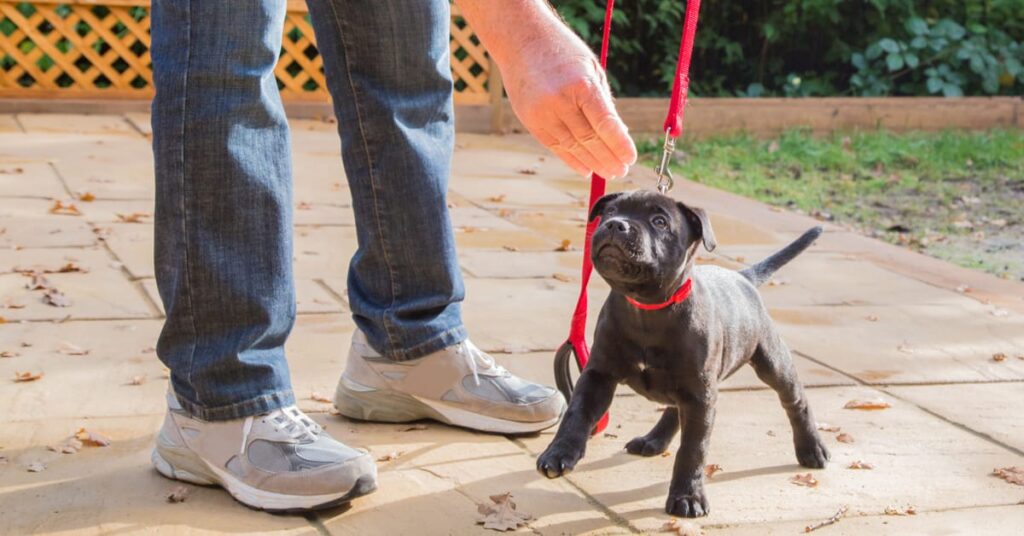
Unfortunately, some people assume that if a dog is small and easily controlled, ignored, or manipulated, they don’t need to actually be trained. Similarly, there is the pervasive idea of “you can’t teach an old dog new tricks” that leads people to decide there’s no point in training an older dog, which absolutely isn’t the case.
Regardless of your dog’s age, size, and breed, training is important. Using positive reinforcement methods allows you to teach your dog new things in ways that make sense to them.
Dogs are social creatures and love spending time with their people. Training is a great way to spend quality time with your dog, and build your bond while having fun together.
Developing a foundation in training together can help prevent some behavioral issues from developing and can help you and your dog work through challenges when they arise.
Find What Motivates Them
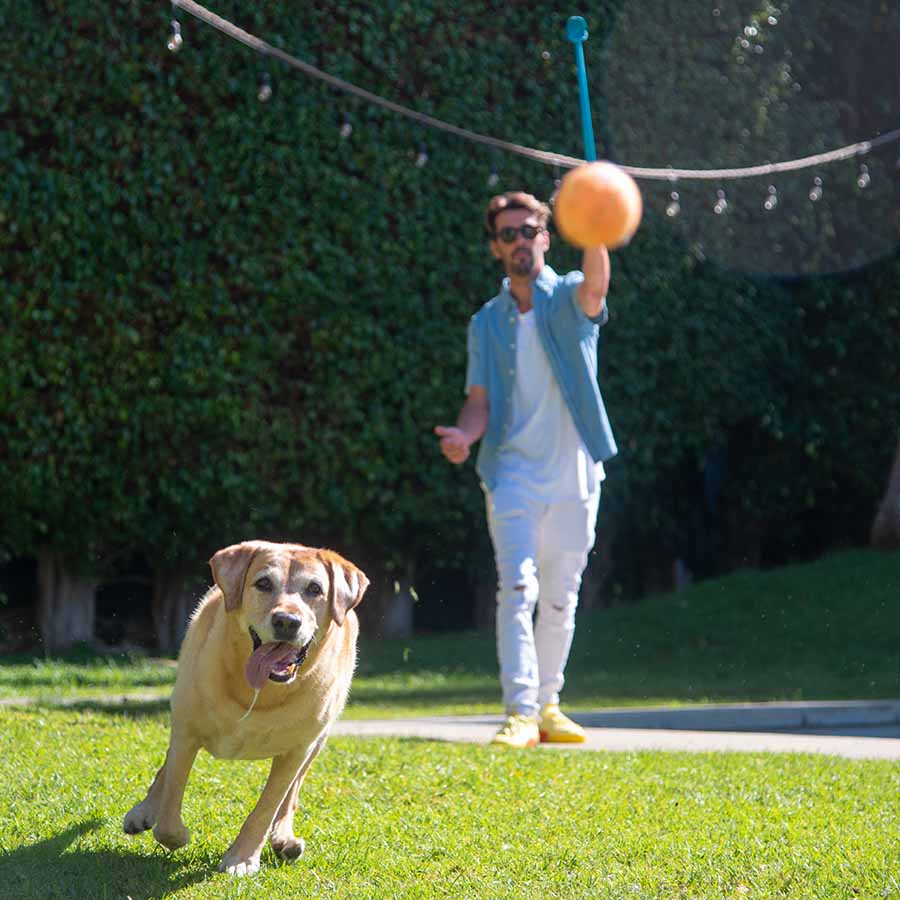
The most important way to help your dog to develop a love of learning is to understand what your dog finds motivating. Even if you love your career and the job you have, you still want to get paid for going to work.
Our dogs are the same way. Individual dogs will be motivated by different types of rewards such as toys and treats. Keep in mind that not all toys and treats are equal in the mind of your dog and will have different levels of value from low motivation to highly motivating.
Have a dog who loves to play fetch? Use that as a reward while training by asking your dog for a cue and then releasing your dog to chase their ball. As you’re jumpstarting your training routine, experiment with different rewards to figure out what your dog likes best. Toys, games, and treats are all great motivators depending on your dog’s preferences.
Keep a ranking (either written down or in your mind) about what your dog considers low value, decent or good value, and what is of high value. Reserve those high-value reinforcers (this may be a treat or a certain toy) for teaching new and challenging skills, or when training in a challenging or distracting environment.
Keep Training Sessions Short
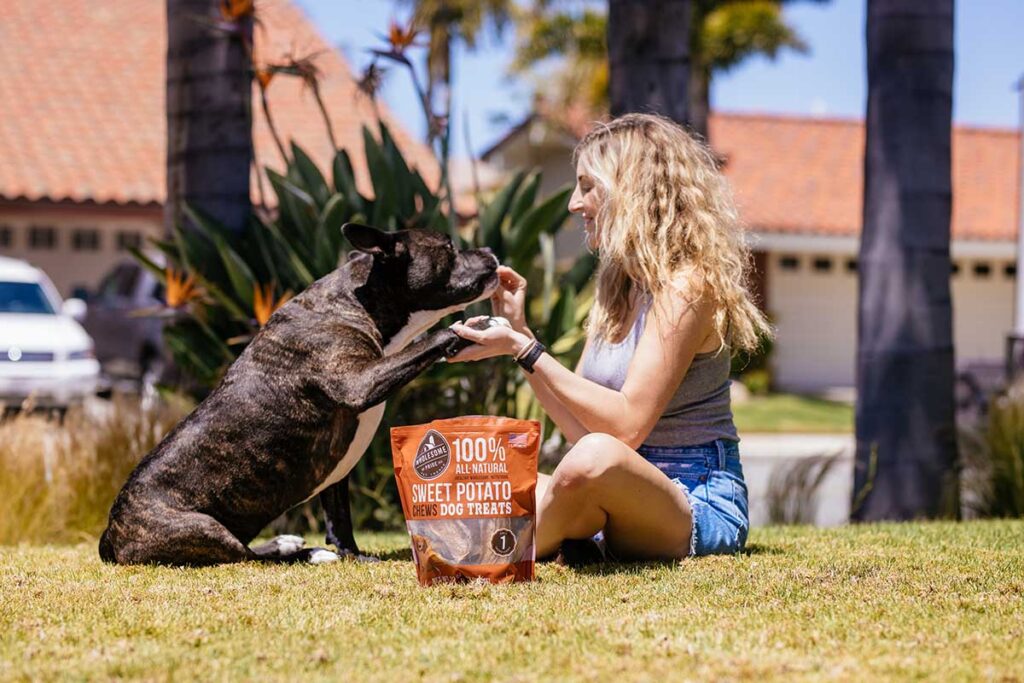
One key to making training fun for dogs is to make them want to come back for more. Some dogs have a high drive for “work” or learning — herding and working breeds (and dogs mixed with those breeds) are especially motivated to learn and train. Other dogs based on breed characteristics and personal temperament can be less naturally self-motivated to train.
In either case, it’s important to keep training sessions short and fun. Avoid drilling a skill or behavior repeatedly in an attempt to get something right or perfect. Instead, try to end on a positive (even if it’s not as far in the training process as you thought you would get).
If your dog is struggling with the new skill, ask your dog to perform a cue they know well, treat, reward, and end the session.
Training for a few minutes at a time several times a day is much more effective than one long training session.
If you know you are a bit of a perfectionist or tend to get in the “zone” when training and struggle to know when to stop, it can be helpful to set a timer on your phone for a couple of minutes when you start. When the timer goes off end your training session.
Don’t Stress Behavior
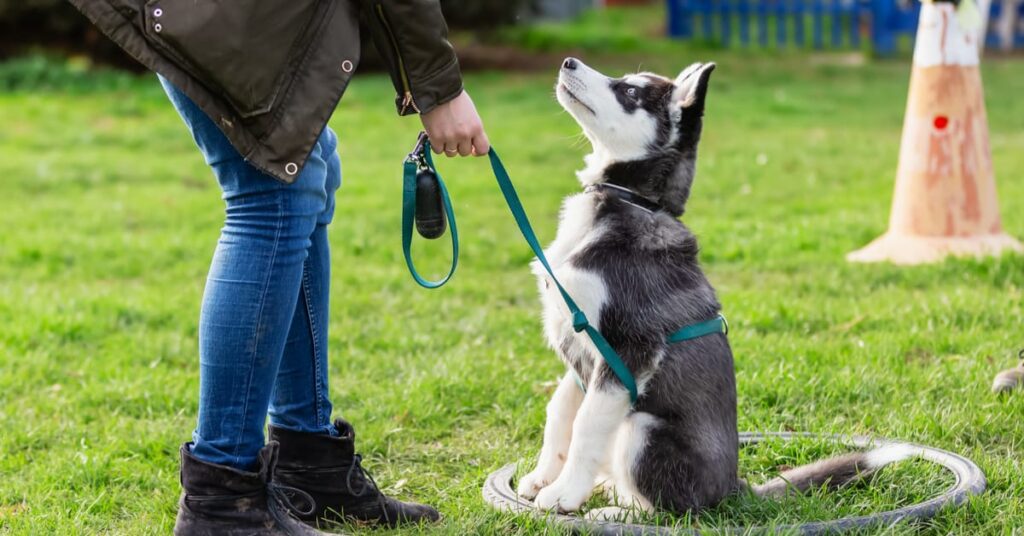
If you have a young puppy and a lot of training goals, or an older dog with a lot of challenging behaviors you are slowly working through, it can be easy to focus most or even all of your training time on these behavioral issues.
While learning to manage your dog’s challenging behaviors and helping your dog work through issues is important, making it the primary focus of your training can decrease your motivation to train, and leave your dog burned out or frustrated and bored with learning.
With so much dog content on social media, it’s easy to get fixated on how you think your dog “should” behave in different situations, or to compare your dog to dogs you see online. Your dog might not be perfectly behaved all the time, but that’s ok! Keep learning fun for your dog!
It’s ok to not make every training session about behavioral training and instead make some of your training sessions just about having fun with your dog.
Reasonable Expectations

Just like people, dogs can get frustrated when trying to learn a new skill, especially if the expectations for what they are supposed to do are unclear, or the criteria are too high. Having high expectations for your dog can lead to frustration while training for both of you. This can make training less fun and decrease your dog’s interest in learning.
When training with your dog try to keep expectations reasonable and reward successful approximations towards a behavior you are training.
For example, if you want your dog to sit and stay while you open the door to get a delivery, start by teaching your dog to sit and reward them for staying for a second with you next to them. Over time you can very slowly build up the distance you are from your dog while they are sitting.
Plan Ahead
If you know there is a skill or behavior you want your dog to have, it’s important to plan ahead. Before a dog can reliably perform a behavior in a stressful or distracting environment, they need a history of learning and practicing that skill/behavior in a familiar environment with low amounts of distraction.
One of the mistakes that puppy parents make is thinking a behavior like jumping up is cute while they are small, and then getting frustrated when their puppy grows up and continues to perform the same behavior — only it’s less cute when their dog is now 80 pounds.
By making your training consistent and teaching your young puppy an incompatible behavior like bringing a toy instead of jumping up, you can set them up for success when your puppy grows up into a big dog.
Encourage Your Dog’s Interests
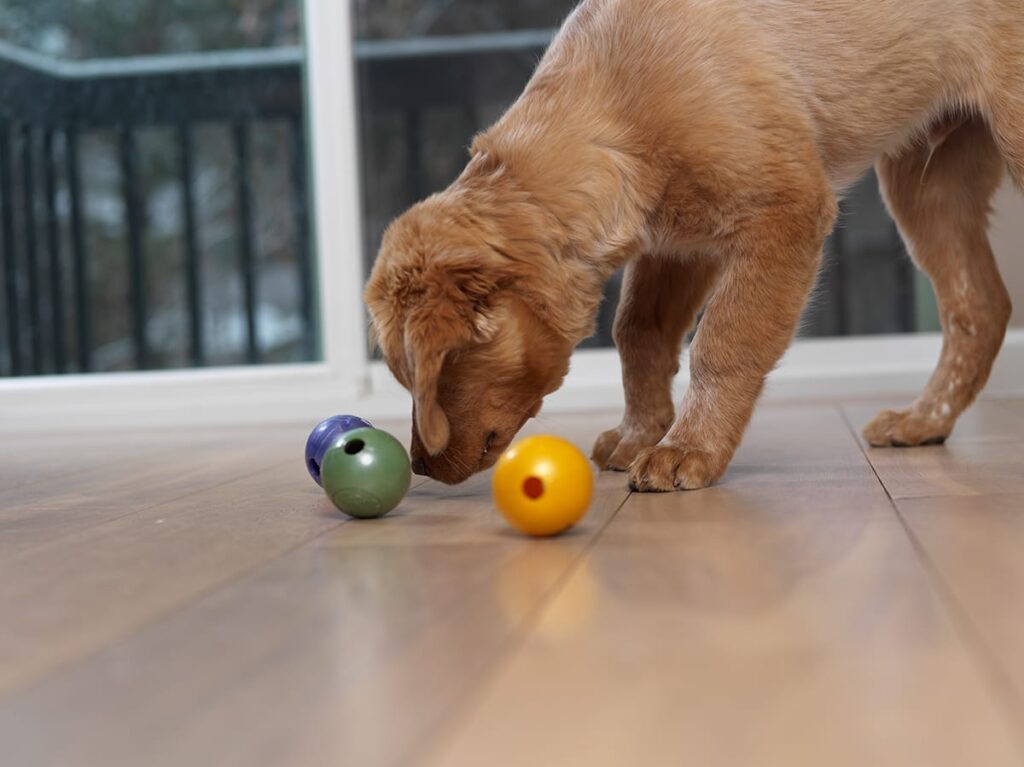
To help your dog develop and maintain a love of learning make sure to spend time working on skills, behaviors, and cues that align with your dog’s interests.
For example, if you have a dog who loves to sniff, teach your dog to find hidden toys or treats in your home or yard. Start with a toy your dog really likes and put it behind the leg of a chair or other slightly hidden location and encourage your dog to search for it. When your dog finds the toy, make a big fuss with lots of praise.
Do you have a dog who is more food motivated? You can do the same thing with a treat.
Alternately, take empty boxes, drop some treats into them, and encourage your dog to search for the treats. When your dog finds the treats give lots of praise.
If your dog is having fun with this you can get involved (purebred or mixed breed) with earning Virtual Scent Work titles from the AKC. If sniffing is your dog’s passion you might even want to consider taking a scent work class or teach your dog to find hidden essential oils and start competing in Scent Work/Nose Work!
The Value of Tricks
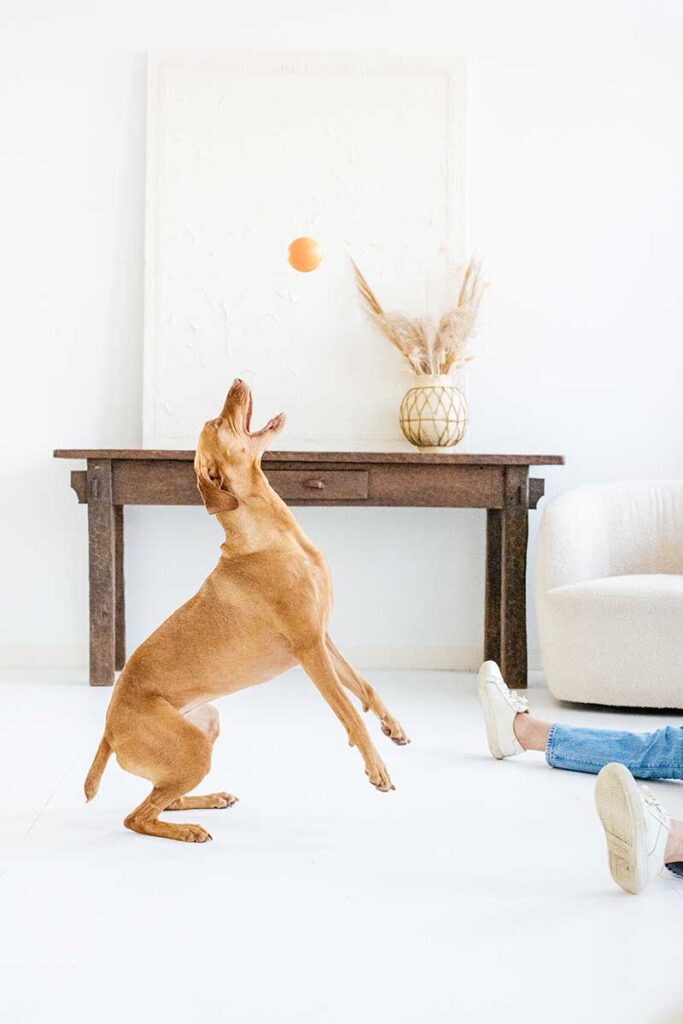
Feeling stuck in a rut with your training? Teaching your dog trick behaviors is a fun way to build and reinforce a love of learning for your dog. Although tricks and games might seem frivolous or silly, they are a great way to build a training relationship with your dog. Trick skills can also be a good way to get and keep your dog’s attention during challenging or distracting situations while out on walks.
A benefit of trick training is that the easiest ones can be taught to most dogs in one or two training sessions. This will build your dog’s confidence in learning, help them develop a desire to learn more, and build your confidence as a trainer. This can then translate into all the other training goals and priorities you might have.
Watch Me/Name Game
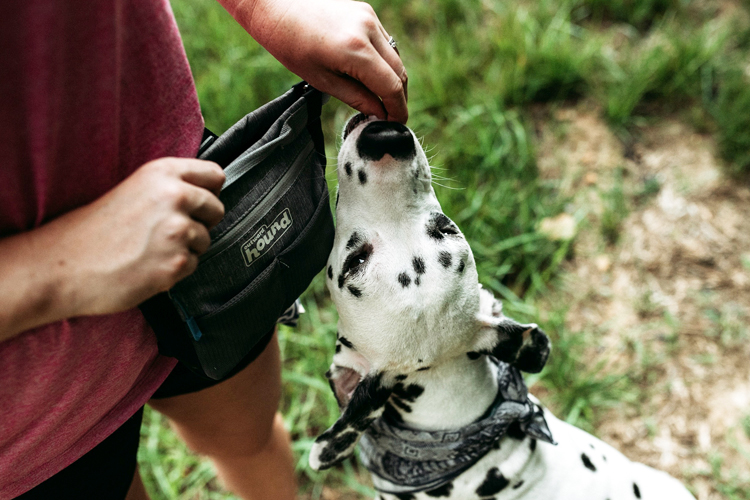
If your dog has been in your life for a little while they probably know what their name is, but what does your dog do when they hear their name?
A useful skill to teach your dog is that saying their name is asking for their attention. To teach this skill, have a lot of small high-value treats and a clicker (if you clicker train). When you are quietly near your dog but not engaging with them, say their name in an excited voice. When your dog looks up at you, click and/or excitedly praise and treat your dog.
Repeat this several times. This is a game you can start to play multiple times as you go about your daily routine with your dog. It’s an easy skill to practice even when you don’t have a lot of time, and very quickly your dog will start to excitedly turn towards you anytime you say their name.
Once your dog has mastered the name game inside the house, start to introduce it in slightly more distracting environments like when you’re walking on a quiet street, and then build up to practicing in highly distracting environments when it is important to get your dog’s attention.
Enriching Your Dog’s Life
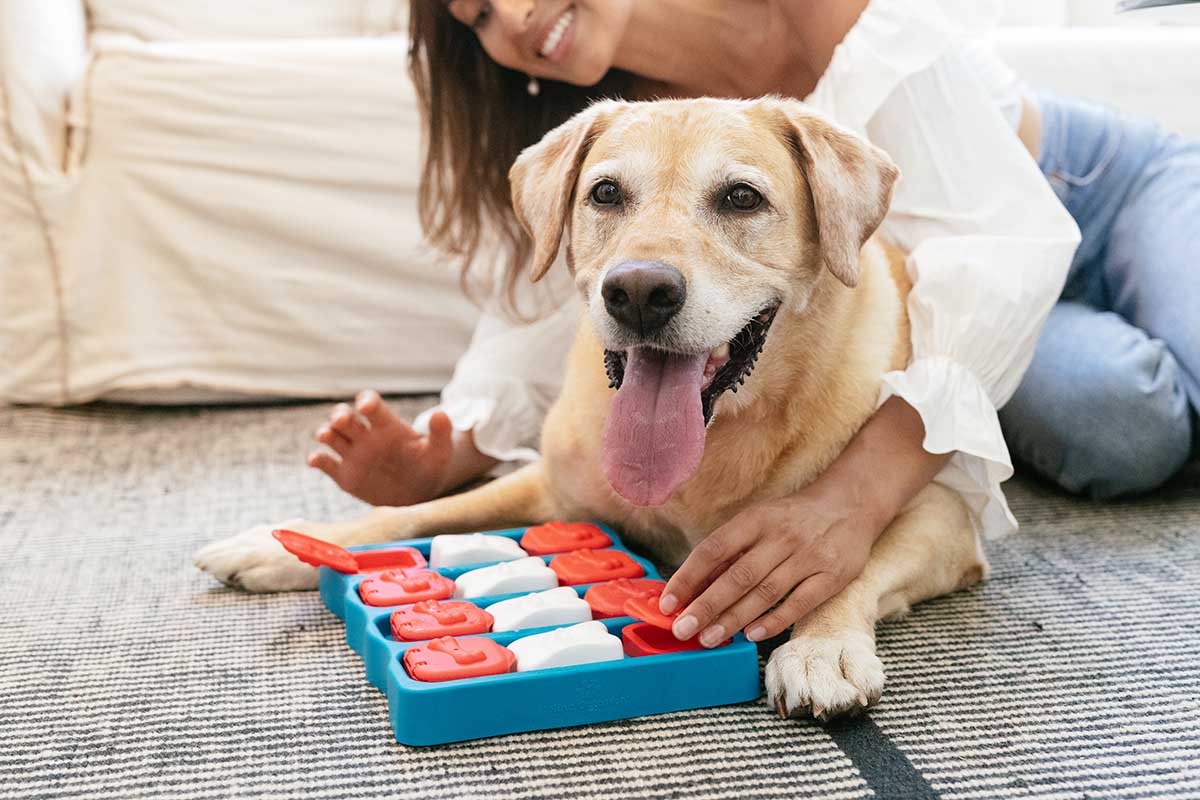
Dogs are highly intelligent and benefit from opportunities to exercise their mind each day. You can help your dog develop and maintain a love of learning by keeping training sessions short, fun, and highly rewarding your dog.
Think about the activities your dog likes best and incorporate those behaviors into your training routine. Developing a life-long love of learning is a foundation that will help you to work through any behavioral issues your dog might be dealing with, as well as strengthen the relationship you have with your dog.

